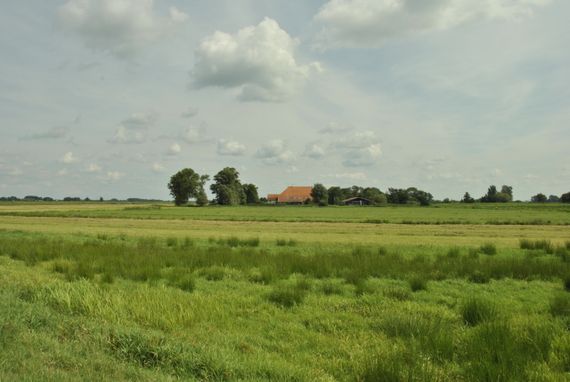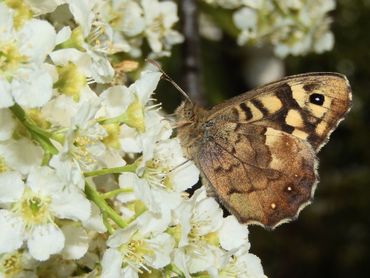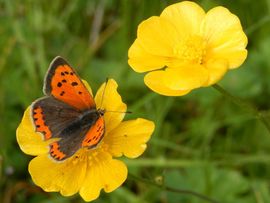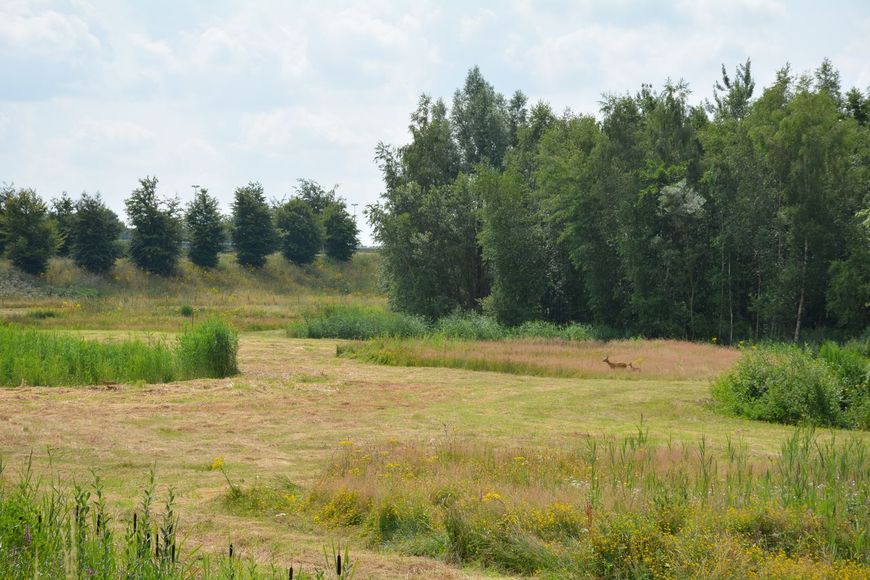EU CAP Reform 2020
EU Common Agriculture Policy (CAP) and Butterflies
Reform the CAP: harmful agriculture is destroying nature

Organisations representing 2500+ scientists called on the European Parliament for a total reform of the CAP. Intensive agriculture is destroying nature: the EU has a duty to avert this crisis.
Intensification of agricultural practices, including landscape simplification and consolidation, increases in the use of pesticides and mowing frequency, irrigation expansion and the destruction of pasture lands have led to a decline of European farmland bird populations of more than 55% between 1980 and 2015, and a decline of insect population abundance of more than 76 % in a study of 63 nature reserves in Germany between 1989 and 2016.
You can read the Open Letter Reform the CAP, signed by Butterfly Conservation Europe, European Ornithologists Union, European Mammal Foundation, Societas Europaea Herpetologica.
The EU Farm to Fork Strategy

The Eu Farm to Fork Strategy (F2F) was published on 5 October 2020 and committed to integration of EU Green Deal goals, including supporting biodiversity in farmed areas; reducing pressures
from nitrogen and phosphorus; reducing pesticide use; and supporting climate goals; alongside improving farmers’ incomes and delivering safer food more sustainably.
A link to the F2F Strategy is here, available in all EU languages, Extracts from the EU Commission F2F Action Plan, which are most relevant to the environment and biodiversity recovery are here:
EU Farm to Fork Strategy Extracts
The latest Reform - EU Common Agriculture Policy 2023 - 2027
On 2 December 2021, the agreement on the reform of the EU Common Agricultural Policy (CAP) was formally adopted. The new legislation, which is due to begin in 2023, potentially paves the way for a fairer, greener and more performance-based CAP. Agriculture and rural areas are central to the European Green Deal, and the new CAP will be a key tool in reaching the ambitions of the Farm to Fork and Biodiversity strategies.
Although these strategies profess a high ambition for the contribution of CAP to recovery of biodiversity and ecosystem health it is clear from the plans for implementation of the new CAP - through Member State Strategic Plans (see links below) - that funding an effective action for biodiversity is likely to be insufficient to support biodiversity recovery targets.
The EU CAP has a budget of €386.6bn - one third of the whole EU budget.
Link to EU Commission information on reformed CAP 2023: https://ec.europa.eu/info/food-farming-fisheries/key-policies/common-agricultural-policy/new-cap-2023-27_en

The 10 Objectives of the reformed CAP are:
- to ensure a fair income for farmers;
- to increase competitiveness;
- to improve the position of farmers in the food chain;
- climate change action;
- environmental care;
- to preserve landscapes and biodiversity;
- to support generational renewal;
- vibrant rural areas;
- to protect food and health quality;
- fostering knowledge and innovation.
To see Briefs on these objectives https://ec.europa.eu/info/food-farming-fisheries/key-policies/common-agricultural-policy/new-cap-2023-27/key-policy-objectives-new-cap_en#documents
Many butterflies are highly dependent on sustainable agricultural management to sustain their populations. Many grassland butterflies, including those of European importance, listed under the EU Habitats Directive are in Unfavourable Conservation - inadequate or - bad status.

The EU Grassland butterfly Indicator shows a 25% decline in abundance since 1990. Protection of their remaining habitats and reductions in pressures, eg from nitrogen enrichment, toxic pesticides, fertilisation or ploughing are urgently needed. Together with investment to increase suitable habitat; to halt grassland abandonment; and to sustain extensive mowing or grazing of semi-natural grasslands. Many insect pollinators depend on these habitats too and their populations are at risk, threatening a loss of vital pollination services to crops, fruit and vegetables and wildflowers. Both diversity and abundance of insects are important for resilience. Semi-natural grasslands also provide climate services through sequestering carbon.
National CAP strategic plans
Each EU country is designing a national CAP strategic plan, combining funding for income support, rural development, and market measures. When designing their strategic plans, EU countries will contribute to the ten specific objectives through a toolbox of broad policy measures provided by the Commission, which can be shaped around national needs and capabilities. CAP specific objectives by country.
EU countries were given until 31 December 2021 to submit their CAP strategic plans. Following this, the Commission had six months to approve the plans ahead of their implementation in January 2023. The approval process will be based on the criteria laid down in the new CAP strategic plan regulation.
Insufficient investment in biodiversity recovery in CAP Strategic Plans

In Spring 2022, leading environmental NGOs expressed significant concerns about the failure of these draft plans to include sufficient action for biodiversity and ecosystem recovery. By the end of May 2022, the Commission had sent observation letters relating to all 28 draft CAP strategic plans that were submitted by EU countries. The letters identify elements of the proposed plans that require further explanation, completion or adjustments before the Commission can approve them. Each EU country has been given the opportunity to comment on their observation letter. It is clear from the Commission’s comments that many plans will fail to deliver the required improvements in biodiversity across the farmed landscape, unless significantly improved.
Alongside the letters themselves, the Commission has created an overview of the content of the letters, which summarises the key elements of the 28 proposed plans and the related observations which were made for each country.
For fact sheets about the farming sector (up to 2020) in each Member State with information about Conservation status of protected grasslands; forest and agriculture area under Natura 2000; and protection of natural resources see https://ec.europa.eu/info/food-farming-fisheries/farming/facts-and-figures/performance-agricultural-policy/agriculture-country/cap-specific-objectives-country_en
Summary of Biodiversity related targets and Eco schemes in draft CAP Strategic Plans (May 2022)
- Of those Member States which have set a target for preserving habitats and species (R31), 11 have set a target to cover 0% – 20% of utilized agricultural area (UAA), 5 have set a target of 21%- 40%, and 7 have set a target of 41% or more;
- Of those Member States which have set a target for preserving landscape features (34), 15 have set a target to aim at 0%-10% of UAA, 2 have set a target of 11%-40%, and 2 have set a target of 41% or more;
- The Member States so far have proposed one or more eco-schemes addressing the following main issues related to biodiversity: “biodiversity” including landscape features/non-productive areas (All Member States except AT, RO and SE), pesticide/pest management (11 Member States: BE-FL, BE-WA, BG, CY, DE, EE, HU, LU, MT, NL, PL, PT), nutrient management (12 Member States: BG, CY, DK, FI, HR, HU, IE, LU, LV, PL, SI, SK), extensive farming on permanent grassland (12 Member States: BE-FL, BE-WA, BG, DE, ES, HR, IE, LT, LV, NL, PL, SI, SK ), organic farming (12 CSPs: BE-FL, BG, DK, EE, EL, FR, LT, LV, NL, PL, PT, SE);
- Agri-environment management commitments planned for biodiversity include those that address pesticides, support Integrated Pest Management, preservation and restoration of grasslands and high nature value farming ecosystems, targeted species and habitat restoration actions. There is a high degree of variability in links with the prioritized action Framework for Habitats and Birds.
Focus on performance and results
CAP legislation lays down a common set of indicators as part of a new performance, monitoring and evaluation framework. The indicators will be monitored through annual performance reports and a biannual review of the performance of CAP strategic plans to assess the progress of EU countries in reaching their targets and the objectives of the CAP.

